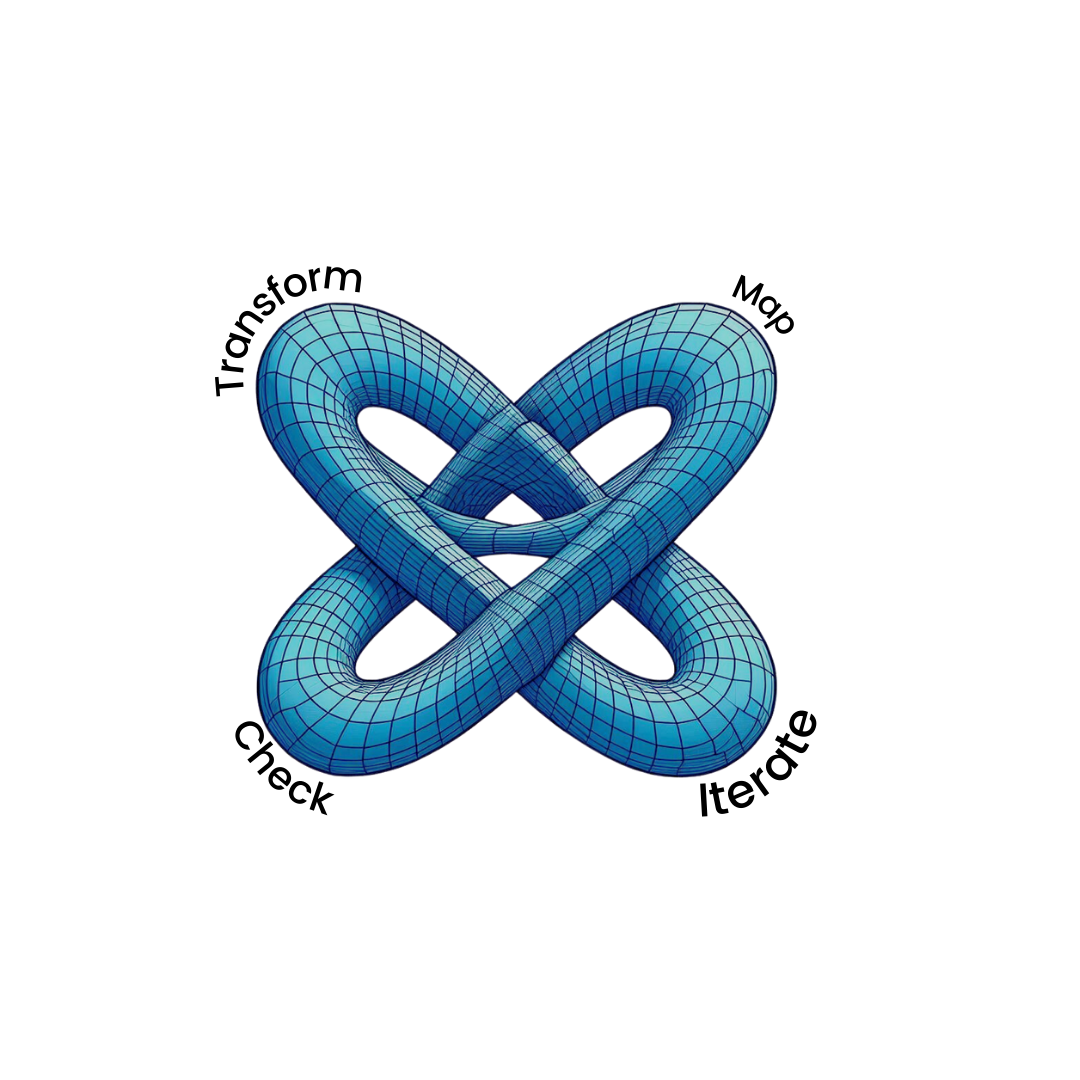Understanding the MICT Framework
The Mobius Inspired Cyclical Transformation (MICT) framework is a powerful and adaptable approach to problem-solving, process improvement, and system design. It's based on a simple yet profound idea: that continuous improvement comes from a cycle of understanding, action, evaluation, and adaptation.
The MICT framework draws inspiration from the Mobius strip, a one-sided surface with a twist. This shape symbolizes the interconnectedness of seemingly opposite concepts and the continuous flow between different stages of a process. Just as the Mobius strip has no beginning or end, the MICT cycle is designed to be ongoing, driving constant learning and refinement.
The Four Stages of the MICT Cycle
- Mapping (Understand): This is the initial stage, where you thoroughly analyze your current situation. It involves:
- Gathering data about the system or process you're working with.
- Identifying key variables, parameters, and constraints.
- Defining clear goals and objectives.
- Understanding the context and environment.
- Creating a "map" or model of the current state.
- Iteration (Experiment): This is the action stage. Based on your understanding from the Mapping stage, you:
- Develop and implement strategies or solutions.
- Take actions and observe the results.
- Experiment with different approaches.
- Explore the possibilities within the defined "map."
- Checking (Evaluate): This is the feedback stage. You critically evaluate the results of your actions:
- Measure key metrics and performance indicators.
- Compare the results to your goals and expectations.
- Identify what worked well, what didn't, and why.
- Analyze any unexpected outcomes or side effects.
- Transformation (Adapt): This is the learning and adaptation stage. Based on your evaluation in the Checking stage, you:
- Refine your strategies and solutions.
- Update your understanding of the system (your "map").
- Make changes to improve performance and achieve your goals.
- Learn from both successes and failures.

The cycle then repeats, starting with a new Mapping stage that incorporates the knowledge gained from the previous cycle. This continuous iteration drives ongoing improvement and adaptation.
MICT/D/HQC: Advanced Capabilities
For more complex systems, the MICT framework can be extended to incorporate principles of Human Quantum Cognition (HQC). This advanced version, MICT/D/HQC, adds further dimensions of analysis:
- Dimensionality (D): MICT/D considers the dimensionality of the system. This might be the literal spatial dimensions (2D or 3D, as in the animation demo, or geographic locations), but it could also represent abstract dimensions, such as different aspects of a business (marketing, operations, finance) or different facets of a problem.
- Human Quantum Cognition (HQC): This incorporates concepts like:
- Probabilistic Thinking: Instead of fixed rules, the system uses probabilities to model uncertainty and make decisions.
- Contextual Influence: The system's behavior is influenced by the overall context, not just the immediate inputs.
- Continuous Transitions: The system moves smoothly between states, rather than making abrupt jumps.
MICT/D/HQC is particularly well-suited for modeling systems that exhibit complex, dynamic, and often unpredictable behavior, such as AI systems, human behavior, and social systems. (Further details on MICT/D/HQC can be found on the [link to theory page, if/when created]).
Benefits of Using MICT
- Adaptability: The cyclical nature of MICT makes it inherently adaptable to changing conditions.
- Continuous Improvement: The iterative process drives constant learning and refinement.
- Holistic Approach: The framework encourages a systems-thinking perspective, considering all aspects of a problem.
- Data-Driven Decision-Making: The "Checking" stage emphasizes the importance of measuring results and using data to inform decisions.
- Versatility: MICT can be applied to a wide range of problems, from business strategy to software development to personal growth.
- Structure: Provides structure.
